Works and Transport ministry milestones
14th joint transport sector review
By Reagan Ssempijja
For the financial year 2017/18, the approved budget for Ministry of Works and Transport was sh461.111b. Of this, sh9.182b was allocated to wages and sh60.715b to non-wage bills under the recurrent expenditure. At least sh154b went towards development expenditure by Government and sh236.564b was development undertaken through external financing.
Expenditure
According to the sector performance report 2017/18, by the end of 2017/18 the released amount totalled sh320.883b representing 69.6% release and sh320.535b was spent. The approved budget for recurrent expenditure amounted to sh69.897b and at the end of June, sh93.064b had been released representing 133.14%. Of this total sh9.182b had been released for wages and sh83.882b for non-wage recurrent expenditure. On the part of the development expenditure, sh154.229b was approved by the Government and sh236.564b was obtained as external funding. At the end of 2017/18 financial year, sh150.584b had been release by Government of Uganda representing 97.6% of government funding released and sh76.884b had been released by the donors representing 32.5%. Of the money released by the Government for development expenditure, sh150.492b had been spent representing 99.9% of the release and sh76.844b on donor funding had been spent representing 100% spent of the donor funding.
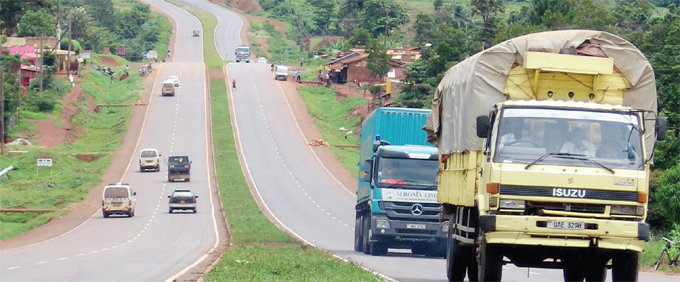 The Works and Transport ministry mainly oversees roads and other transport infrastructure like railways and airports
The Works and Transport ministry mainly oversees roads and other transport infrastructure like railways and airports
Physical performance
The ministry through department of policy and planning was able to coordinate the formulation and review of policies, laws, regulations, guidelines and standards whose status as at end of financial year A2017/18 is as indicated through policies below.
National transport and logistics policy
The overall objective of this policy is to improve the efficiency and safety of transport in order to facilitate economic and social development, through creation and maintenance of an integrated and sustainable transport system for Uganda. CLICK HERE FOR MORE ON THIS STORY
Uganda's water transport back on its feet
Water transport in Uganda is part of the National Road Network under Ministry of Works and Transport. Worth noting for an ordinary Uganda is the space covered by water in the country. About 241,038 square kilometers of Uganda's total land area is covered by swamps, lakes and rivers, most of which are navigable. Almost all of Uganda's water resources are Trans-boundary in nature and shared with her neighbors such as Kenya and Tanzania (Lake Victoria) and the Democratic Republic of Congo (Lake Albert and Edward). Water transport is therefore used to transport communities living in the Islands, across the lakes, tourists and goods.
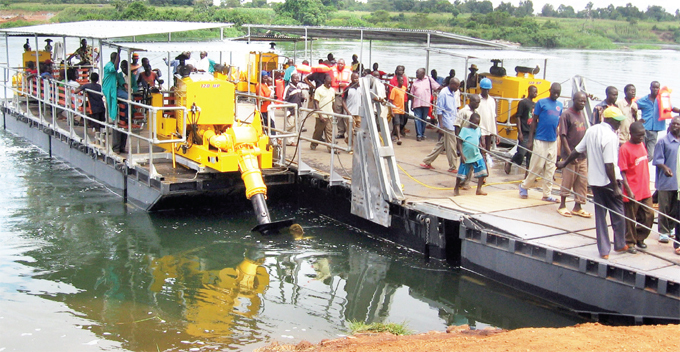 Passengers disembark from a ferry that connects Mbalamuti in Kamuli district to Kayunga district
Passengers disembark from a ferry that connects Mbalamuti in Kamuli district to Kayunga district
Inland system
According to the Ministry of Works and Transport, the inland water transport system in Uganda is divided as Lake Victoria transport and transport on the remaining five lakes and six rivers. Lake Albert provides truck ferries to the Democratic Republic of Congo. The Port of Kisumu in Kenya is part of the Northern Corridor transport system.
"The Kisumu route does not attract transit to Uganda due to the low capacity of the Nakuru - Kisumu railway track. This route connects Kenya to both Tanzania and Uganda through Lake Victoria. Unfortunately it can only support low axle loads. The growth of the hyacinth has only worsened the situation and even further affected vessel movement," the Ministry of Works and Transport report states.
Worth noting though is that Uganda does not have river ports but has two inland ports on Lake Victoria. That is the Jinja pier and Port Bell. Only one ship operates between Port Bell and Kampala. Uganda also utilises the neighbouring country lake ports of Mwanza in Tanzania and Kisumu in Kenya. CLICK HERE FOR MORE ON THIS STORY
Govt polishes walking, cycling regulations
Fasi fasi is a word you often hear in downtown Kampala, as casual labourers jostle for a right of way for their bicycles or wheelbarrows. Yet, there have been no substantive policies to regulate their movement. Several experts have recommended for a law and or policy that would guide and control such kind of transport in the country. Their prayers have finally been answered, with the formulation of the non-motorised transport policy (NMT).
Policy package
According to the works and transport ministry, the policy is designated to raise the profile of NMT elements within planning, designing and construction of road infrastructure in the country.
The policy also known as active transport and humanpowered transportation includes walking and cycling. It also includes other variants such as small-wheeled transport such as push scooters, skates, cycle rickshaws and wheelchair travel.
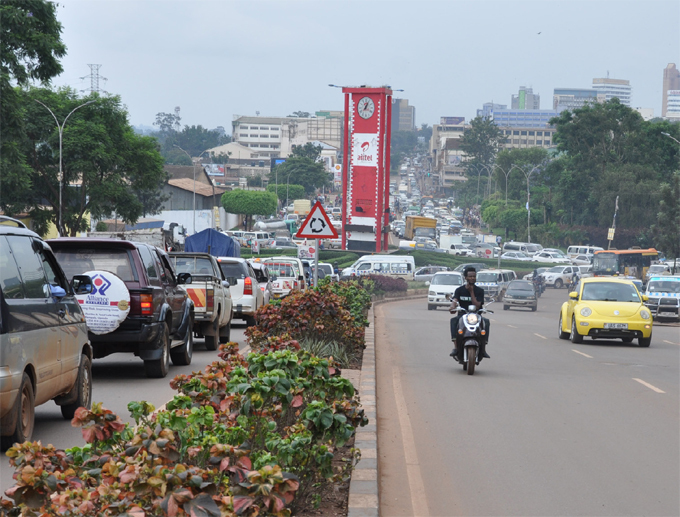 The mon-motorised transport policy will streamline walking and cycling in towns
The mon-motorised transport policy will streamline walking and cycling in towns
These modes of transport both recreation and transportation and are especially important for short trips of about seven kilometers, which take up the largest share of the urban trips. According to the German Development Agency (GIZ), the NMT can be stimulated by a policy package consisting of investments in facilities, awareness campaigns, smart urban planning.
It can also be enhanced through improved public transport and disincentives for the use of motorised private vehicles. According the works and transport ministry, the policy is under pilot by Kampala Capital City Authority (KCCA) and later it will be rolled out nationwide.
The ministry has also held regional consultations, decimations in both East Africa and Northern Africa to check how effectively the policy will work in the country. As part of the policy, KCCA has embarked on establishment and improvement of sidewalks, crosswalks, paths, bicycle lanes and networks. Currently, a number of KCCA roads under construction, those which were recently completed have provisions for sidewalks and bicycle lanes. CLICK HERE FOR MORE ON THIS STORY
Government moves to address road accidents
By Martin Kitubi
Travellers often say a prayer before embarking on a journey. The words might be different, but the objective is the same - to seek protection from the creator.
Over the years, the Kampala-Masaka, Kampala-Gulu and Kampala- Jinja highways combined have registered more road accidents than other roads in the country. A range of factors such as reckless driving and drink driving are said to be the main causes of accidents on these highways.
In a bid to combat these accidents, the Ministry of Works and Transport embarked on investigations to establish the main causes of these accidents, which on many occasion are fatal.
In the works and transport sector performance report of the 2017/18 financial year, the ministry investigated three fatal accidents with the aim of coming up with lasting solutions to road accidents.
 The Busia one-stop border post that was launched in February 2018. Such initiatives by the Works and Transport Ministry and other government agencies are meant to secure border and road operations
The Busia one-stop border post that was launched in February 2018. Such initiatives by the Works and Transport Ministry and other government agencies are meant to secure border and road operations
The ministry is optimistic that with these findings, they will be in position to address the challenges on these highways. In addition, several other interventions have also been carried out to combat road carnage.
These include one road safety inspection along major national road corridors, especially on the Kampala-Kafu road; research in two key areas of road safety, that is, effectiveness of express penalty scheme regulations.
The ministry also conducted driving schools' regulation with emphasis on road user behaviour on crossing points. In this regard, a total of 33 driving schools out of the targeted 80 were inspected and licensed to operate in the country.
According to the ministry, the major causes of road accidents are attributed to reckless driving with its roots in driving schools. These are some of the achievements by the works and transport sector in the 2017/18 financial year. CLICK HERE FOR MORE ON THIS STORY
Increased funding to boost road maintenance
Proper road maintenance contributes to reliable transport. This is because, there is a direct link between a road's condition and transport fares.
But a badly maintained road can also mean more safety hazards to users. The state of Uganda's roads is improving although at a low pace.
The poor quality roads and relatively weak transport infrastructure has been a challenge for both traders and travellers engaged in crossborder trade. As a priority sector, the budget for roads was raised by the Government from sh398b over the years to sh3.4 trillion in the 2017/18 financial year.
Its current budget now stands at sh4.7 trillion. For instance, according to information obtained from the Uganda National Roads Authority (UNRA), between 2008/09, funds allocated to the construction of national and paved roads hit sh2.5 trillion in financial year 2017/18 up, from sh588b in 2009/10.
As a result, at least, 1,480km of unpaved roads were upgraded compared to a target of 1,600km. Government plans to increase the number of paved roads to nearly 6,000km by 2019/20 according to National Development Plan II.
 Some of the road equipment that was given to districts to improve roads upcountry
Some of the road equipment that was given to districts to improve roads upcountry
Pavement of these roads ultimately reduces road maintenance cost by three times. Worth noting is that, road maintenance remains an essential part in order to preserve both new and old roads in their constructed condition, protect adjacent resources and user safety, provide efficient, and convenient travel for road users.
Unfortunately, maintenance is often neglected or improperly performed by agencies largely due to thin budgets, lack of capacity or negligence by community leaders such as members of Parliament to ensure that allocated funds are put to their rightful purposes.
This has resulted in rapid deterioration of some roads and eventual failure from both climatic and vehicle use impact. For instance, some district organs in charge of monitoring such as roads committees are either not in existence or not fully functioning.
Uganda Road Fund (URF), Increased funding to boost road maintenance a Government agency in charge of financing routine and periodic maintenance of public roads, still grapples with these constraints.
The executive director, Michael Odongo said the Government is aware of the problems hampering maintenance of roads. "We have been raising it [funding challenges] to Government and parliament that maintenance is taking only about sh400b out of the sh4 trillion.
The percentage is very low for the kind of work that needs to be done. We want to have a fair balance in allocation, were 70% is development of new national roads and 30% maintenance," Odongo said.
The Fund has a duty to finance the implementation of annual road maintenance programmes that are carried out by the UNRA, Kampala capital City Authority (KCCA), and other agencies for Districts, Urban and Community Access Roads (DUCAR). CLICK HERE FOR MORE ON THIS STORY
URC reviving Uganda's old track
After successfully taking over management of the conceded assets of Uganda's Railway network from the Rift Valley Railways (RVR), the Uganda Railways Corporation has now laid an ambitious plan to revive business on the tracks.
The Government-owned enterprise, according to officials, has already drafted a sh333.59b business plan to rehabilitate and purchase key components of the railway network, in order to fully resume operations.
Business on the tracks had gone silent for months, following administrative and technical difficulties the concessioners, RVR had faced before they were terminated.
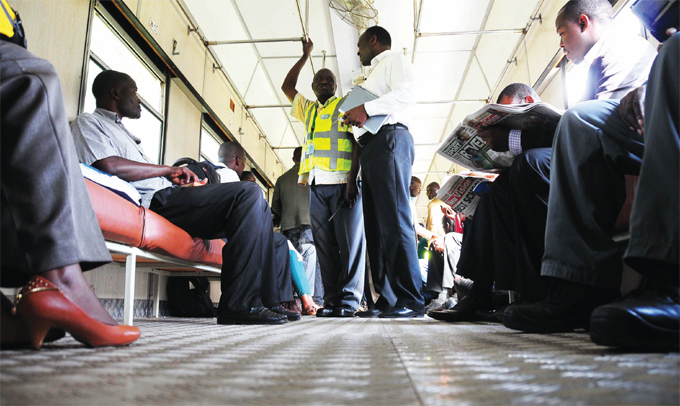 Passengers aboard a Kampala-bound train recently. URC wants to purchase more passenger wagons
Passengers aboard a Kampala-bound train recently. URC wants to purchase more passenger wagons
Routes revived
Since taking over, however, URC has revived the southern route through Port bell, Mwanza to Dar es Salam, which had been silent for more than 10 years, bringing business with Tanzania to its knees.
Statistics indicate that the once vibrant business, carrying about 30% of Uganda's business had reduced to less than 3% during the decade-long slumber. According to Geoffrey Obora, the URC chief civil engineer, the MV Kaawa is fit and already plying the route after rehabilitation, with plans to rehabilitate the MV Pamba underway.
Obora said the plans are underway to also rehabilitate more wagons and coaches, as well as procure others from China to stabilise their operations. "Currently, cargo and passenger operations have resumed, with 20 passenger coaches plying the Kampala-Namanve route on a daily basis.
Later, Luzira and Kyengera services will resume which will move a combined 3,600 people between Kampala and its outskirts every day in four routes," he said. Records from the finance ministry indicate the country suffered an estimated loss of sh2.824 trillion in damaged assets during the reign of the RVR.
According to Obora, the unattended track led to vandalism of the sleepers, fittings, loop lines and rails. The locomotives also deteriorated, necessitating rehabilitation. CLICK HERE FOR MORE ON THIS STORY
Expansion of Entebbe airport takes shape
Air transport is one of the most essential forms of international travel today. Apart from enabling easy movement in and out of the country, it also opens up the country's trade and tourism.
To many air transport is a key driver of globalisation. Uganda has its main airport at Entebbe being managed by the Civil Aviation Authority (CAA). There are several other small airports/ fields like Soroti, Kisoro, Masindi, Gulu, and Kasese which are also managed by CAA.
According to CAA's managing director, David Mpango Kakuba, the Government acknowledges the importance of air transport in the development of the country thus CAA's efforts in improving the infrastructure at the airports/ fields.
Kakuba points out at a number of infrastructural upgrade projects taking place at the Entebbe International Airport in order to address the country's growing passenger and cargo traffic.
The upgrade and expansion project forms part of a 20-year National Aviation Master Plan (2014-2033) unveiled by the CAA in January 2015. Currently, the main works for the expansion and upgrading of Entebbe International Airport started in 2016 are being undertaken by China Communication Construction Company (CCCC).
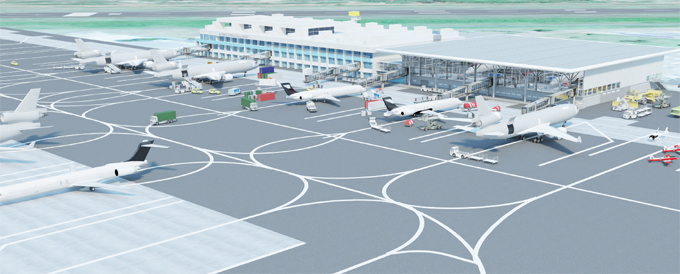 An artistic impression of the expanded Aircraft Parking Apron and airside view of the new terminal building on completion in 2021.
An artistic impression of the expanded Aircraft Parking Apron and airside view of the new terminal building on completion in 2021.
CCCC is also handling the on-going construction of a new 100,000 tonnes capacity cargo centre. The expansion project aims to increase the passenger terminal's capacity from the current 410 arriving and 320 departing passengers to 930 arriving and 820 departing passengers during peak hours.
"Having happy travellers is our key objective. We are improving on the hardware and the software (management) to address the increasing numbers of travellers," Kakuba says. Within the next two years, Entebbe should have capacity to handle about 3 million passengers every year. Facilities like the departure and arrival immigration counters have also been improved and increased in number.
Since 2017, departure counters have increased from six to eleven whereas arrivals immigration counters increased from 14 to 20. "This has drastically enhanced efficiency in service provision and reduced on long queues at peak time," Kakuba says.
He explains that in the arrivals hall there is a special counter specifically dedicated to handling passengers with special needs, crew business and first class passengers. "Our airport is small but manageable. All airdromes have been maintained operated and kept in serviceable status," Kakuba says.
He acknowledges that the road transport has rendered various aerodromes not commercially viable since many people can easily make it to major towns in a few hours on the road. CLICK HERE FOR MORE ON THIS STORY
CAA looks forward to change of aviation law
By Geoffrey Mutegeki
Like in many parts of the world, air transport in Uganda plays an important role of fostering tourism and enhancing the importexport trade. To make this role count, the country requires a vibrant air transport system and good management.
To this effect Uganda established the Civil Aviation Authority (CAA) in 1991 to manage Uganda's air transport. CAA is the government agency responsible for licensing, monitoring and regulating aviation matters.
However, to strengthen this mandate the board of CAA, called for the amendment of the Civil Aviation Authority Act, which was forwarded to Parliament. David Mpango Kakuba, the CAA managing director, expressed optimism that Parliament would handle the process of amending the Civil Aviation Authority Act with utmost urgency.
 Section of the Entebbe Airport old runway that is being rehabilitated. Photos by Hajarah Nalwadda
Section of the Entebbe Airport old runway that is being rehabilitated. Photos by Hajarah Nalwadda
The Parliament physical infrastructure committee is currently charged with the responsibility of reviewing the Civil Aviation Authority (Amendment) Bill, 2017.
"The proposed amendments are aimed at ensuring harmonisation of Uganda's regulations and practices with the universal practices across the globe. The current Act has been in place since 1991 and while it has ably guided the industry a number of practices have since changed which called for an update," Kakuba says. The Civil Aviation Authority (Amendment) Bill, 2017, Cap 354 seeks to address and make the following changes to the Act of 1991
Proposed amendments
To re-designate Civil Aviation Authority as the Uganda Civil Aviation Authority; to re-designate the managing director as the director general; to empower the director general to take specific actions without consultation with the Minister; to provide for the establishment of an independent accident and incident investigation unit and for related matters.
To grant air worthiness inspectors unlimited access to aircraft and private aerodromes without first seeking permission. Under its management, CAA oversees one international airport and 13 airfields. There are also privately owned airdromes which complement air travel with in the country. CLICK HERE FOR MORE ON THIS STORY
Mechanical workshops support road maintenance
By Prossy Nandudu
The cost of buying and maintaining heavy road equipment is no doubt costly. Not only is such equipment too expensive to procure, but even transporting it from the country of origin is equally expensive.
That is why on several occasions people complain of delayed road works or bad roads, especially in times of heavy rains. Where there is a broken road, there is inevitably poor access to social services such as access to medical care, schools and markets.
This was worse during times of insurgency until 1986, when the National Resistance Movement government came to power and embarked on infrastructure development. High on the agenda at that time was the need to rehabilitate the road network in the country.
It is against this background that the Government, through the works and transport ministry, decided to set up mechanical workshops in different parts of the country to maintain the existing road equipment.
 President Yoweri Museveni, the Japanese Ambassador to Uganda, ministers and local government officials at the commissioning of the rod construction equipment in Bweyogerere, Wakiso on June 09, 2017
President Yoweri Museveni, the Japanese Ambassador to Uganda, ministers and local government officials at the commissioning of the rod construction equipment in Bweyogerere, Wakiso on June 09, 2017
Eng. Francis Keeya, the senior mechanical engineer with the works and transport ministry, says the government mechanical workshops are responsible for major repairs of road equipment allocated to districts and zonal centres. Keeya doubles as the Manager for Bugembe Regional Mechanical Workshop.
He says there are three major mechanical workshops in the country. These are situated in Gulu, Jinja and Mbarara. The one in Kampala serves the central region and doubles as the headquarters of the mechanical station in the country.
How they were established
Keeya says the workshops were established in 1986 because at that time the roads were in a bad state across the country. With support from donors such as the Japan International Co-operation Agency (JICA) and the International Labour Organisation, some equipment was procured to maintain road networks in the eastern and western regions of the country.
With funding from development partners, equipment was procured for each of the districts, but to maintain the equipment, there was need for qualified expertise at district level. However, when these were phased out in 1990, the equipment and some of the trained engineers remained redundant.
In addition, the Government did not want to let the engineers go because of their expertise. That is why regional centres were set up to accommodate these people, but to also maintain the equipment that had been sent to the 120 districts. CLICK HERE FOR MORE ON THIS STORY
Regional mechanical workshops to save districts repair burden
By Nelson Kiva
Maintenance and rehabilitation of feeder roads is the mandate of the district local governments, legacy of the decentralization policy.
From 1986 to 2006, government with support from other partners had undertaken the maintenance and rehabilitation of some feeder roads directly with the target of improving the deteriorated status of road network in the country.
Machines were relocated to the district local governments to form road units. However the phasing out of feeder roads projects and distribution of equipment left behind several workshop tools and support equipment and highly experienced and qualified technical personnel.
Regional mechanical workshops
However, it was deemed necessary to consolidate the workshop tools, equipment or machines and the personnel into the formation of three regional mechanical workshops.
They included Gulu charged to offer mechanical services to all equipment, in Acholi, Lango and West Nile regions. The others were Mbarara for units in Western and South Western regions, while Jinja handled those in Eastern and Central regions.
The equipment which were deployed include, Motor graders, Bulldozers, Wheel loaders, Vibro rollers, Pneumatic roller, Pedestrian rollers, Dump truck, Water bowser, Mobile Workshop, Hydraulic Crane, Agricultural tractors with trailers, three tonne crane truck, 20 tonne mobile crane, Bitumen heaters and motorcycles.
Gulu Workshop
It has since achieved a lot and according to the Gulu mechanical workshop regional manager, Eng. Karan Hanning, most of the machines which were rotting off in the 32 districts have been repaired.
This was in fulfilment of one of their mandate to carry out major repairs of specialised heavy equipment which individual districts could not handle due to lack of and technical knowhow "Districts are happy with the services we offer, with many of the grounded machines repaired and redeployed on the roads," he said.
Minor repairs are worked on at the site and for major repairs, Karan notes that they are done at the facility where by the faulty machine is parked on loaders and transported.
"The districts are also required to report the mechanical break downs to the facility on top of the teams from the regional mechanical workshop visiting for preventive mechanical undertakings on the machines. Most times we repair per need which emerges and they are reported to us," Karan said.
The Workshop has also been able to provide equipment not part of the district road units or specialised support equipment such as Low loaders, crane trucks and mobile workshops. It has also been able to provide on-job training to district mechanical staff and promoted the retention of the trained staff. CLICK HERE FOR MORE ON THIS STORY
Public Private Partnership to bridge financing gap in roads sector
By Samuel Balagadde
With the national road transport network as the most dominant aspect of infrastructure in Uganda, the demand for upgrading roads from gravel to tarmac and the maintenance of existing roads has grown in importance over the years.
A big percentage of the transit cargo traffic and passenger vehicles use the national road network hence straining it. This has to an extent given many of the roads a short lifespan.
The non-adherence to vehicle load regulations by truck operators and drivers has been a major cause to this challenge. Due to insufficient funds to adequately facilitate the construction and maintenance of these national roads, the Government has reached out to the private sector through Public Private Partnership (PPP) arrangements.
Through such arrangements, the Government is being able to foster construction of big road projects with the understanding that these investors will recoup their investment through road user charges collected in form of road tolls.
Through PPP the Government is able to acquire and develop nationwide infrastructure as well as offer opportunities to improve service delivery With PPPs, come a number advantages such as faster completion of construction works as investors are eager to recoup their investments.
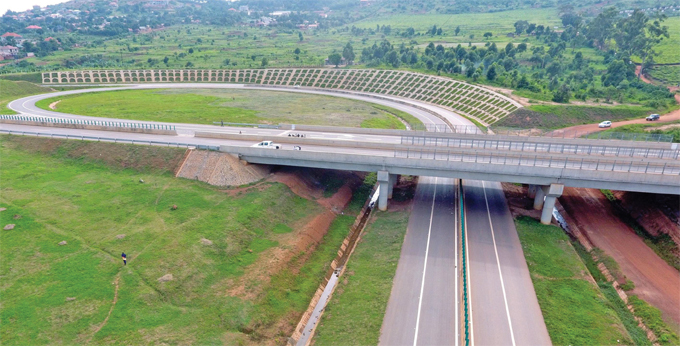 The Kampala-Entebbe Expressway. The cost of construction will be recovered from the user collections through road tolls
The Kampala-Entebbe Expressway. The cost of construction will be recovered from the user collections through road tolls
Allen Kagina the executive director of Uganda National Roads Authority (UNRA), said although the Government continues to fund road projects using the locally raised taxpayers revenue and donor support, PPPs will push the roads sector to greater heights.
Under such arrangements, she says, the Government retains the role of acquiring the right of way through compensating the Project Affected Persons (PAPs) and the potential investor is mandated to finance the construction works and maintenance as they recoup their investments over the agreed period of time.
Gen. Katumba Wamala, the state minister for works says, roads constructed under the PPP arrangement with tolled implying that motorists will pay a user fee. However, he says the fee is optional and payable only by those who want to move fast through the road with limited traffic jam interruption.
He says highways such as the Kampala-Jinja, Kampala-Entebbe and Busega-Mpigi will be maintained and in good condition for those who are ready to pay the road toll.
Government investment in high mobility routes is geared towards enhancing trade and economic growth of the country and curtailing heavy traffic congestion on the existing highways, which will result into saving time and other associated benefits. CLICK HERE FOR MORE ON THIS STORY
Transporters embrace central corridor route
By Samuel Balagadde
Transporters have began using the central corridor route. The route from Dar es Salaam port through Mwanza port in Tanzania connects to the Port Bell pier in Luzira and onward to Kampala railway station.
The route that has just been revamped after a decade is under the ongoing going infrastructural development for both water and railway transport. The World Food Program (WFP) recently transported a 25,000 tonne consignment of humanitarian aid using the route.
The consignment containing vegetable cooking oil was donated by the United States Agency for International Development (USAID) to refugees in different settlement areas across the country. It was shipped in from the US via Dar es Salaam port.
Chris Asiimwe, a WFP logistician while receiving the first batch of the consignment containing 720 tonnes of vegetable cooking oil. The consignment was transported by the Tanzanian Umoja wagon ferry at Port Bell Pier.
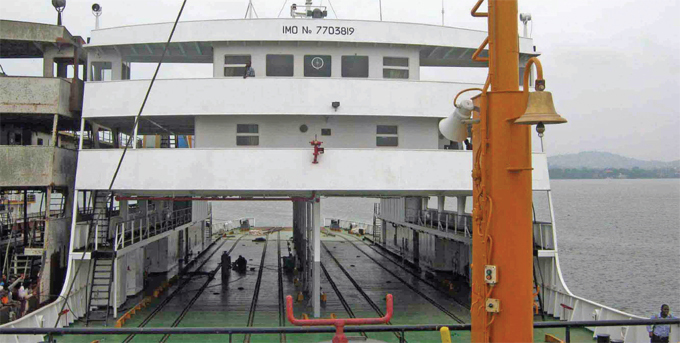 MV Kaawa docking at Port Bell pier resumes operations after inspection for seasworthiness. Photos by Samuel balagadde
MV Kaawa docking at Port Bell pier resumes operations after inspection for seasworthiness. Photos by Samuel balagadde
Secure route
Asiimwe said the Dar es Salaam route is secure. He added that WFP did not encounter any obstacles on the way. He said this is the first time after a decade that they are transporting humanitarian aid through this route as it had been neglected by the Rift Valley Railways (RVR), the former concessionaire for Uganda Railways Corporation (URC).
The cargo which was accompanied by Tanzanian Ports Authority (TPA) officials was later transported from Port Bell through Kampala to WFP storage facilities at Nalukolongo a Kampala suburb.
The central corridor route covers transit cargo movement from Dar es Salaam port and Mwanza Port in Tanzania, Mutukula to Kampala and onward to neighbouring countries like DR Congo, Rwanda and Burundi.
The 25 year RVR concession that was to run up to 2030 starting in 2006 involved operation and management of the national wagon ferries at Port Bell pier was prematurely terminated early this year over poor performance.
Asiimwe said with the new route they have managed to cut their transport costs by almost 50% in comparison to what they would have spent on roads transport. He said their choice would also help preserve the road infrastructure and protect it from rapid depreciation due to such a big consignment.
Robert Rwendeire, a URC port officer at Port Bell pier said the transportation of UN cargo from Dar es Salaam was also to be shared by MV Kaawa, Uganda's national wagon ferry that carries 22 wagons per trip. Rwendeire said MV Kaawa is slightly bigger than MV Umoja, which has a capacity of 18 wagons.
He said wagon ferries take 18 hours between Port Bell and Mwanza in Tanzania to deliver goods. This means that the two vessels will deliver the entire 25,000 tonnes of consignment in less than a month. CLICK HERE FOR MORE ON THIS STORY
MORE STORIES
MT. ELGON LABOUR - BASED TRAINING CENTRE
ADVERT LINKS
EAST AFRICAN CIVIL AVIATION ACADEMY